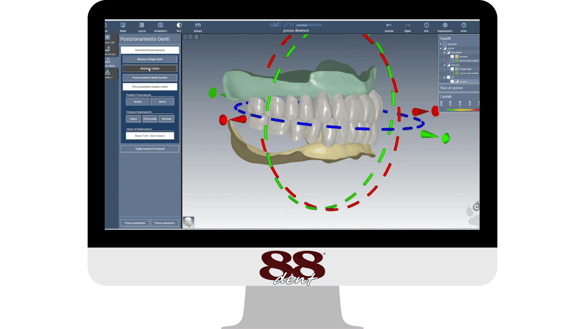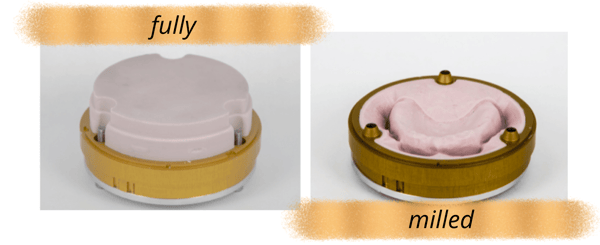88dent's All4Dentures Project consists of using the teeth we have discussed in previous articles (Article 1 and Article 2), in a digital way.
The Revolutionary All4Dentures Project
The same shapes that the customer can buy physically are found virtually in the CAD. Then the technician proceeds with the correct choice in terms of shape/size virtually and, thanks to a detailed report issued by the CAD, can proceed with the purchase.
CAD technology proves to be very advantageous (read the article that explains why), as it greatly simplifies and reduces assembly time: the teeth are already in the correct occlusion and, through simulation, can also be moved in sectors.

Once the placement of the teeth is finished, the gingival part of the prosthesis (what would be in wax in the analog) is created with a quick automatic.
At this point you are ready to export a file package to share with the MillBox CAM software, also part of the All4Dentures bundle.
.png?width=585&name=Foto%20blog%20Articoli%20MAYOR%20(1).png)
There is an automatism that allows the CAM to do an automatic nesting of repositioning of the prosthesis that has just been made, inside the virtual muffle. From there, the milling calculation is created to send to the CNC.
.png?width=585&name=Foto%20blog%20Articoli%20MAYOR%20(2).png)
The same muffle included in the All4Dentures package will be filled with silicone and placed in the Milling Machine (read the article about Milling Machine), ready to receive the calculation of the milling path just computed in the CNC.
 It is exactly a duplicate of the patient's mouth.
It is exactly a duplicate of the patient's mouth.
The technician takes the teeth, places them in each individual seat, closes the muffle and injects the resin.
.jpg?width=700&name=Foto%20blog%20Articoli%20MAYOR%20(4).jpg)
This part remains analog, because (as also explained in Article 1) the totally digital solutions found so far do not give a time and cost benefit to the user. So 88dent has kept digital good where it is needed, namely in design and milling, keeping the injection phase still analog to give a real advantage to the technician.